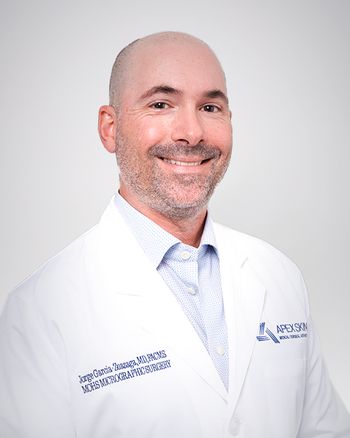
Performance pay issue still in infancy
Key features of the plan, which the division has been refining over the past four to five years, include sharing profits — and risks.
"Pay-for-performance (P4P) programs remain very much in their infancy," says John H. Armstrong, M.D., secretary of the American Medical Association (AMA). "These have come about due to health plan and employer interest in reducing costs. The AMA remains interested in innovative quality improvement initiatives, to include P4P programs that are truly designed to improve the quality of care. These programs are patient-centered; they link evidence-based performance measures developed by physicians in collaboration across specialties to financial incentives that are not take-aways from the system."
Dermatology presents its own challenges.
"Many of the diseases we treat don't have data points that may be as easily measured as the frequency of a blood test or the number of mammograms performed," says Joseph W. McGoey, M.D., a dermatologist practicing with the Oakwood Health System in Southgate, Mich., and former medical director with the Henry Ford Health System.
"How do you measure performance in the treatment of acne - (by) the number of visits or generic prescriptions? Reduction in the number of lesions? The number of modalities used? The total expenditure per quarter or annually? What parameters will be used to pay for performance?" he asks.
Similar questions apply to common dermatologic diseases including psoriasis, eczema and contact dermatitis.
Risks, rewards Additionally, physicians must understand the risks and rewards of P4P participation.
"If you agree to the parameters that are going to be measured and you do well," asks Dr. McGoey, "does that mean an increased reimbursement? A guarantee that you will remain inside the network? And if you don't do as efficient a job in that P4P model, does that mean you'll be excluded from the network?"
To iron out such problems, the AMA supports the use of demonstration and pilot projects.
"For the past five years," Dr. Armstrong says, "the Association has had a physician consortium for performance improvement that has developed performance measures. These are serving as a basis for a demonstration project in the Centers for Medicare and Medicaid Services (CMS) that includes 10 large groups to see if there is improvement. We believe P4P programs that follow our guidelines have potential to improve patient care, but this has yet to be proven. However, it's very clear that when a program purports to be P4P but in reality is merely a cost-saving program for a health plan or employer, patients are harmed."
Washington University Another organization that has taken the initiative in implementing P4P principles is Washington University in St. Louis, Mo. In the university's dermatology division, the program is now called a retention plan rather than an incentive plan.
Newsletter
Like what you’re reading? Subscribe to Dermatology Times for weekly updates on therapies, innovations, and real-world practice tips.

















